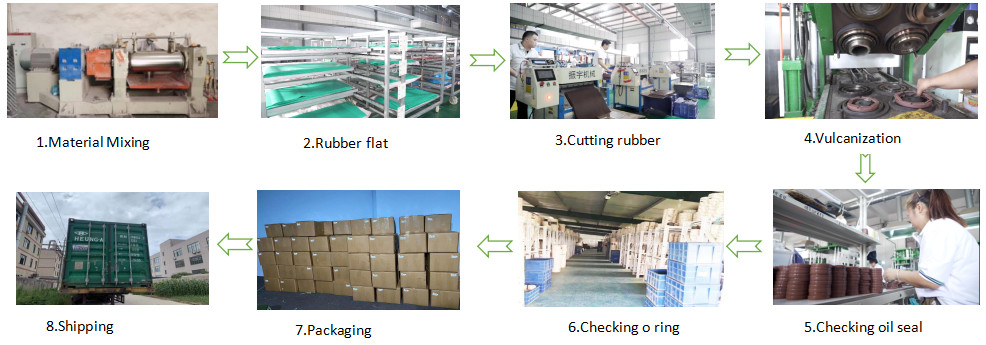Rubber Oil Seals: The Engine’s Best Friend in the Automotive World
Introduction: In the intricate world of automotive engineering, one unsung hero stands out – the Rubber Oil Seal. This inconspicuous component plays a critical role in preserving the heart of the vehicle – the engine. In this article, we’ll dive into the realm of Rubber Oil Seals, exploring their composition, functions, and their indispensable role in ensuring the smooth operation and longevity of automotive engines.
The Anatomy of Rubber Oil Seals: Rubber Oil Seals are meticulously crafted from high-quality elastomeric materials, including nitrile, silicone, EPDM, and Viton. These materials are carefully selected for their resilience, durability, and sealing properties. The circular, flexible design, typically featuring a lip, makes them the ideal choice for sealing applications in engines and various other automotive components.
The Crucial Functions:
Fluid Containment: Rubber Oil Seals are masters at preventing the leakage of vital engine fluids, including oil, lubricants, and coolant. Their robust sealing capabilities ensure that the engine operates at peak efficiency while minimizing the risks associated with fluid leaks.
Contaminant Protection: These seals act as formidable barriers against harmful contaminants like dirt, dust, and moisture. By doing so, they protect the engine’s vital components from wear and tear, thus extending its operational life.
Temperature Resilience: Rubber Oil Seals are designed to thrive in the extreme temperature conditions of an engine, guaranteeing optimal performance under the hood.
Chemical Resistance: Their innate resistance to various engine fluids and chemicals is a valuable asset in safeguarding the engine from corrosion and damage.
Applications in the Automotive Industry:
Engine: Rubber Oil Seals are strategically placed in the engine to keep oil and other fluids in their designated areas, thus preventing leaks and contamination.
Transmission: They are used to seal the transmission system, ensuring the smooth operation of gear changes.
Wheel Hubs: In the wheel hubs, these seals protect against dirt and moisture, preserving the integrity of wheel bearings.
The SEO Connection: For automotive professionals and enthusiasts seeking information on Rubber Oil Seals, this article serves as a valuable resource. Implementing SEO strategies is vital to ensure that this content reaches the target audience effectively. By including pertinent keywords and phrases such as “Rubber Oil Seals,” “engine sealing,” and “fluid containment in cars,” we enhance the discoverability of this article in search engine results. This aids professionals in accessing the information they need and raises awareness about the crucial role that Rubber Oil Seals play in the automotive world.
Conclusion: Rubber Oil Seals are the uncelebrated heroes that ensure the reliability and longevity of automotive engines. Their unassuming presence in the engine bay plays a pivotal role in keeping vital fluids in and harmful contaminants out. From the engine to the transmission and wheel hubs, Rubber Oil Seals are the loyal companions that help ensure the smooth and efficient operation of vehicles on the road.
















